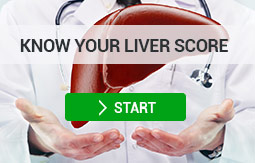What’s in this article
- What is Gaucher disease?
- When do you require liver surgery?
- Is the disease contagious?
- Treatment and prevention
What is Gaucher disease?
People who suffer from gaucher disease have a lack of glucocerebrosidase enzyme (This enzyme is active in lysosomes, which are structures inside cells that act as recycling centers).
Without the glucocerebrosidase enzyme, excessive amounts of fat accumulate in the liver, lungs, bones, spleen, and, sometimes in the brain. Excess fat in these organs stops them from functioning properly.
There are three different types of Gaucher disease:
- Type I – this is the most common form of Gaucher disease and is not as serious as the other types. According to the Liver Directory type I accounts for around 90% of all cases. It causes liver and spleen enlargement, pain in the bones, broken bones, and kidney or lung problems. Type I can occur at any age to anyone.
- Type II – This often occurs in infants and is a more serious form of the disease which affects the brain. Type II Gaucher disease can cause serious brain damage or even death.
- Type III – This type of Gaucher disease usually appears in childhood and can cause liver, spleen, and gradual brain enlargement.
What causes Gaucher disease?
Gaucher disease is an inherited disease in an autosomal recessive manner (where two copies of an abnormal gene must be present in order for the disease or trait to develop). Normally, the body has two copies of the gene that provide instructions for making the enzyme, glucocerebrosidase. For most people, both genes work properly. When one of the two genes is not functioning properly, the person is a carrier.
Signs & symptoms
According to the Mayo Clinic, signs and symptoms of Gaucher disease vary widely. Siblings with the disease can have different levels of severity. Some people who have Gaucher disease have only mild or no symptoms at all, if they do they could experience the following:
- Anemia
- Fatigue
- Low platelet count that can lead to easy bruising
- Enlarged spleen and liver (hepatosplenomegaly)
- Easy bleeding that is difficult to stop
- Bone pain and the chance of easily broken bones
- Delayed puberty
- Nosebleeds
Treatment and Prevention
Patients suffering from type I of the disease may only suffer from mild symptoms, therefore will not need any treatment. Unfortunately for those suffering from type II, there is not yet any treatment available. Sufferers of type I and III may be offered Enzyme replacement therapy. Enzyme replacement therapy can often help to reduce liver and spleen enlargement, blood abnormalities and help to improve bone density. It works by having an IV that feeds an artificial enzyme replacement into the body. This is done in two-week intervals and is most effective for type I Gaucher disease.
There are also medications available to treat Gaucher disease, however, there are many side effects that come with this treatment so it is usually not preferred by patients.
People who suffer from severe types of this disease my need to undergo a bone marrow transplant which may help to reverse many of the symptoms, however, this is a high-risk procedure.
Find out more about the basics of The Basics of Liver Disease & Liver Functions with Dr. Tarek Hassanein, M.D.
References
Mayo Clinic
Liver Directory
Medicine Net

 (442) 244-5115
(442) 244-5115















